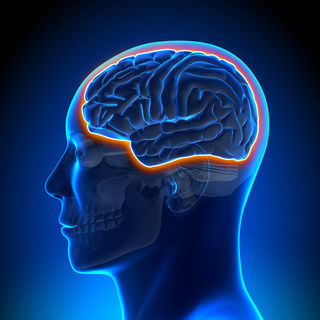Bypassing the Blood-Brain Barrier
The body has developed powerful protections to keep foreign substances out of the brain. Scientists must creatively evade those safeguards in order to treat brain disorders.
By Abigail Fagan published November 6, 2018 - last reviewed on January 2, 2019

The brain is our most treasured possession. It coordinates our movements, our words, our relationships, and the ability to pass on our genes. Our body therefore protects the organ fiercely: The central nervous system polices particles traveling through the bloodstream and invites only the safest into our cognitive chamber. This selective process occurs due to a protective boundary known as the blood-brain barrier. The barrier serves a vital role, but it also poses a tremendous challenge for scientists developing drugs to treat brain-based disorders such as Alzheimer’s disease, stroke, and brain cancer.
A key component of the barrier’s biology involves the endothelial cells that line blood vessels, which are packed tightly together in the brain. Certain molecules, like oxygen, can slip through the gaps between cells. Other molecules, like sugars, can be escorted past the tight chain via proteins. But large molecules, including many drugs, are denied entry.
“The blood vessels in the brain are different from vessels anywhere else in the body,” says Choi-Fong Cho, an instructor in neurosurgery at Brigham and Women’s Hospital. “They’re specialized in protecting the brain.”
Doctors rely on invasive methods of accessing the brain, such as surgery or intra-arterial delivery, whereby a catheter inserted into an artery and guided to the brain infuses medication directly into blood vessels that feed specific brain regions. But scientists have long sought to develop less intrusive and more precise techniques.
Sound Power
One strategy, called focused ultrasound, recently produced promising results. A team at the University of Toronto conducted a small clinical trial to assess its safety in patients with mild to moderate Alzheimer’s disease. Scientists outfitted a subject with a helmet that beams ultrasound waves through 1,024 points. The patient’s hand was injected with microscopic air bubbles and a substance called gadolinium, a dye to mark whether the barrier opens.
When the air bubbles circulated to the brain, the scientists activated the ultrasound helmet. The bubbles absorbed the pulsing sound waves and began to vibrate. The energetic bubbles rapidly expanded and contracted, pulling apart the dense collection of endothelial cells and breaking their tight hold. MRI images depicted gadolinium seeping into the brain—illustrating that the barrier was open. The next morning, brain scans revealed that the barrier had resealed.
“This study was a proof of concept that, yes, it’s possible to open the blood-brain barrier, and we demonstrated this for the first time,” says Nir Lipsman, who led the trial.
Focused ultrasound presents distinct advantages. Scientists can precisely dictate the location of the opening—to an area as small as five square millimeters—which can maximize the effects of treatments. They can also observe the brain through MRI to adapt the approach in real time.
“This study showed that performing this alteration in the brain is safe, controlled, and temporary, all of which is very promising,” says Graeme Woodworth, a neurosurgeon at the University of Maryland School of Medicine and the director of its Brain Tumor Treatment and Research Center.
Trojan Horses
Scientists are pursuing an array of other methods to cross the barrier. The “Trojan horse” approach sneaks drugs into the brain by tricking the transporters and receptors that permit passage across the divide. Cho’s lab is developing chemotherapies to be delivered by modified peptides, which could bind to receptors on endothelial cells and be transported across. “We can use the peptide as a vehicle to shuttle the drug across the blood-brain barrier. Ideally, then the drug would get into the brain tissue,” she says.
Valuable Viruses
Engineered viruses might pose another solution for breaching the blood-brain barrier. Viviana Gradinaru, a professor of neuroscience and engineering at California Institute of Technology, works with strains of an adeno-associated virus, which doesn’t lead to disease or replicate once inside the body. Gradinaru’s team alters peptides on the surface of the virus so they connect with receptors on the barrier and travel across to deliver valuable compounds. For example, a virus might eventually deliver molecules that help strengthen neurons harmed by Parkinson’s disease, Gradinaru says.
On a Nanoscale
Yet another approach leverages nanotechnology. A team at Northwestern University has created a new form of synthetic DNA, called Spherical Nucleic Acids (SNA), that can enter cells and change their genetic blueprint. The nanostructure has a tiny, round core, surrounded by small segments of DNA stretching outward, says Chad Mirkin, who developed the SNA. The team doesn’t fully understand why SNAs cross the barrier, but they believe a receptor that binds to spherical-shaped forms of DNA and RNA is likely responsible.
The team is currently completing the first clinical trial of the technology. They’re using SNAs to target the gene Bcl2L12, which makes glioblastoma cancer cells both immortal and resistant to chemotherapy. The SNAs will ideally enter cells and stop the activity of Bcl2L12—effectively killing the harmful tumor cells. “When spherical nucleic acids are systemically injected, they’ll go everywhere, and they’ll cross the blood-brain barrier,” Mirkin says. “That has huge implications not just for glioblastoma but also for Alzheimer’s disease, Parkinson’s disease, and Huntington’s disease. The ability to get into the brain—and into the cells that make up the brain— is going to be a game changer.”
As scientists hone these and other approaches, they are eager to reach a point when novel delivery strategies truly help patients live longer. Once the methods progress, they will provide an opportunity to retest once-promising drugs that were stymied by the barrier. “We’re very close to getting there,” Woodworth says. “I think we’re certainly going to see exciting things in the next 10 years.”
